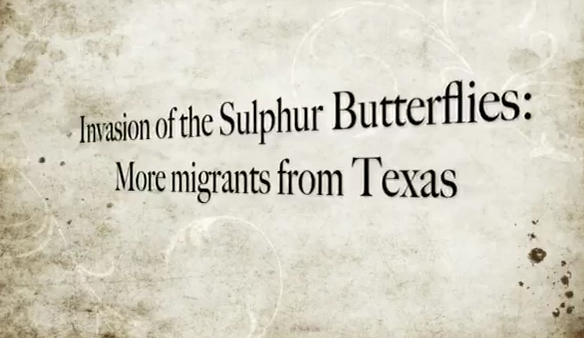Texas has been called the “most important state” to the Monarch butterfly migration by Monarch Watch founder Chip Taylor. Now our Lone Star State is getting attention for spawning an “ecological release” that has resulted in a butterfly “season like no other,” Taylor told the Hornell Evening Tribune in New York.
“This year continues to amaze,” Dr. Taylor wrote to the DPLEX email list, well-read by hundreds of academics, enthusiasts and others who follow the Monarch butterfly migration. Taylor detailed ample and early sightings of Monarchs, Sulphurs, Red Admirals, Buckeyes and other species to the Midwest. Watch the video above for examples.
Taylor and others attribute the 2012 banner butterfly year to a perfect storm of circumstances in Texas, including:
- An historic drought which killed butterfly and caterpillar predators, notably fire ants, followed by
- Generous, well-timed rains, a mild winter that caused host and nectar plants to flourish, and caterpillars and butterflies to thrive.
Eventually, host plant and nectar populations will drop back to normal, as will this year’s butterfly explosion.
In the meantime, enjoy the show.


I have always dreamed of going to Mexico to see the Monarchs. However, it has gotten so dangerous that I’ll probably never go. I would like to come to the Lone Star State at an advantageous time so see them. I know you can’t tell me for a certainty but when is the best time to come? I live in Alabama. Is there somewhere else closer where I can go? Thanks for your help.
Locally you can observe hoards of monarchs in Alabama at and near Fort Morgan State Park around Oct. 25 – Nov. 5. In Texas, you can see hoards of monarchs in tall clumps of pecan trees in the towns of Sonora and Ozona around Oct. 5 (though in some years you may have to drive a little further north to San Angelo or Abilene).